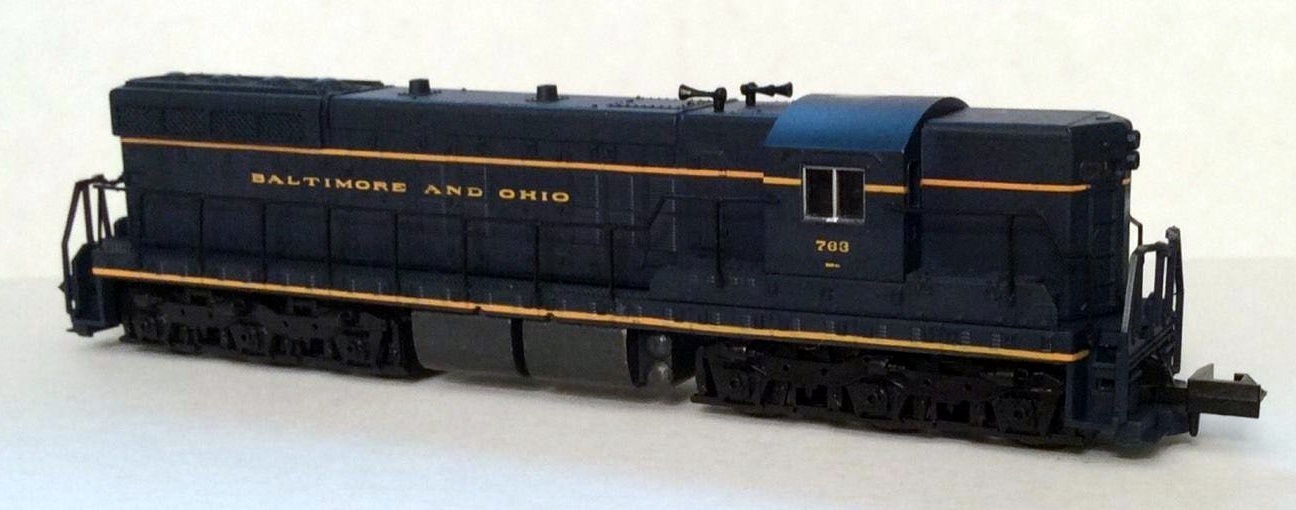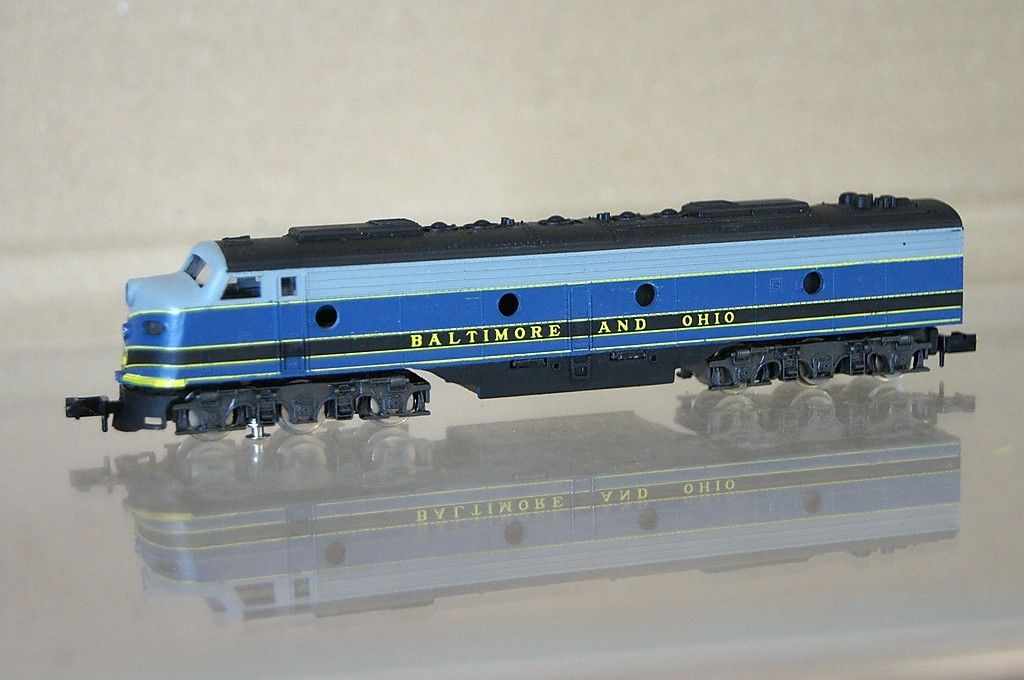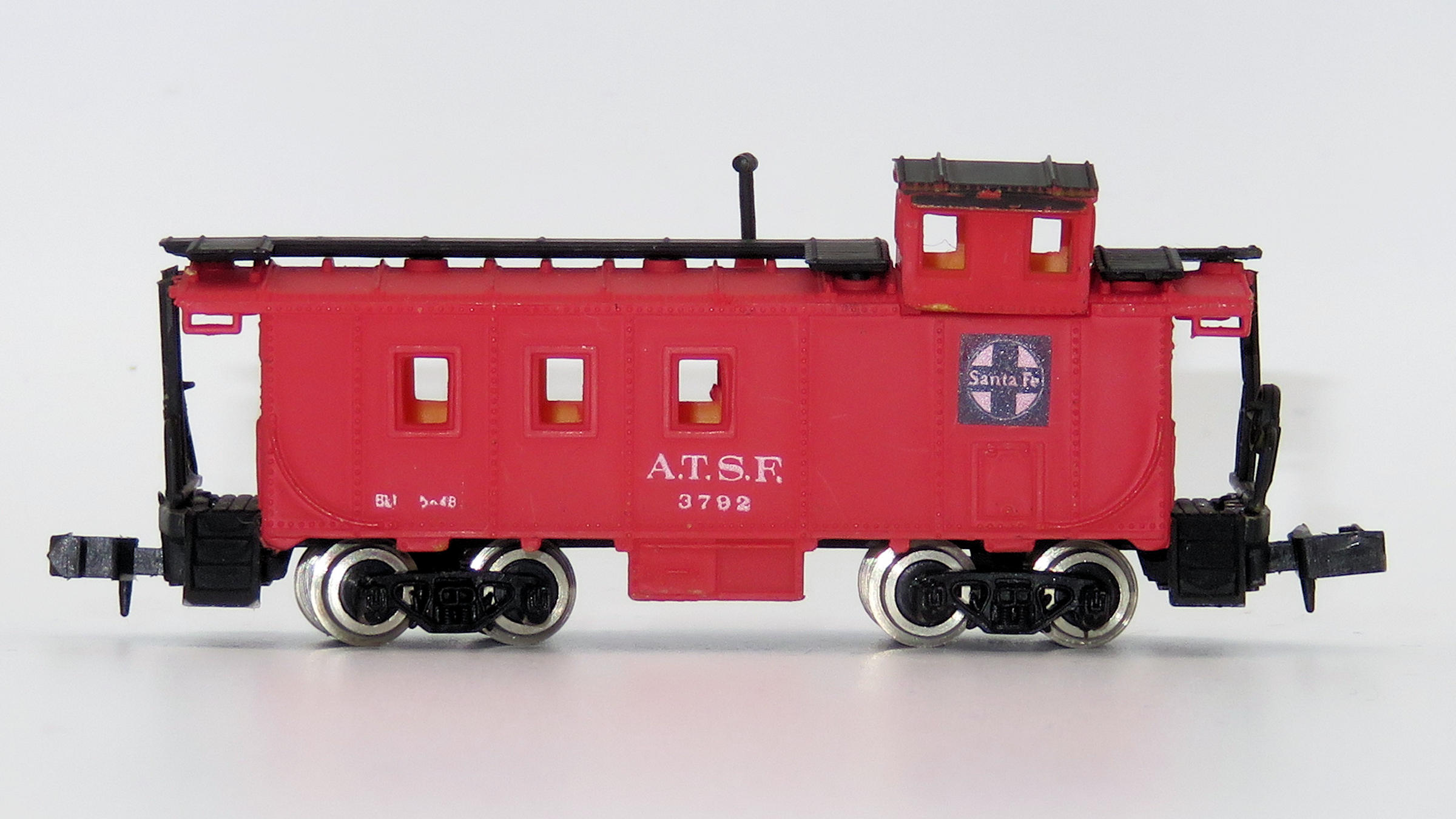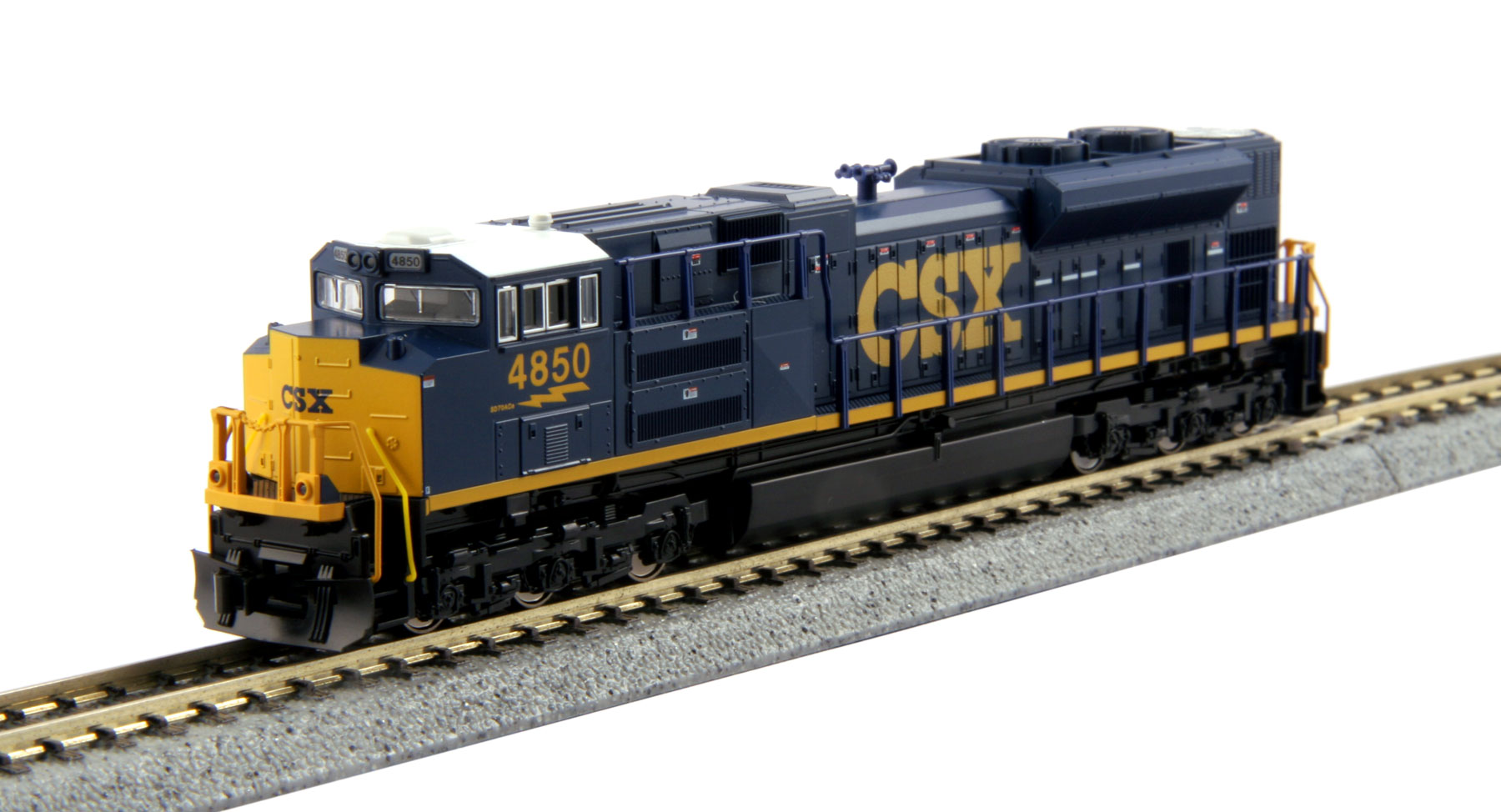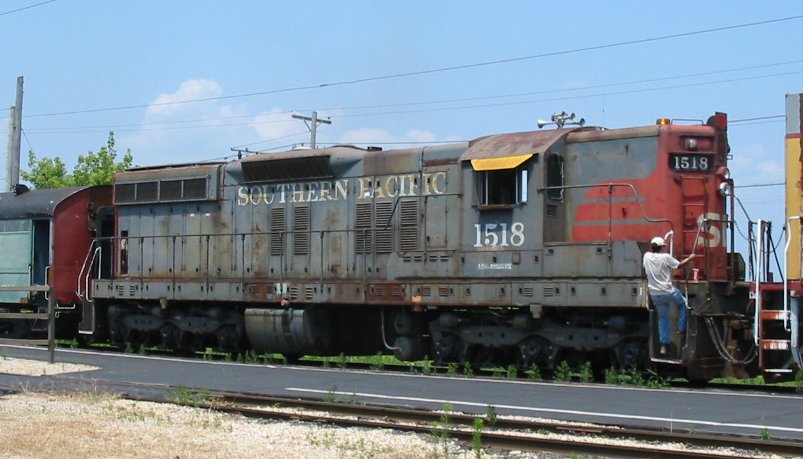Model Information: Life-Like introduced this model in 1996. This model was one of several pretty good quality locomotives created by Life-Like in the 1990s. The model uses a dual-flywheel design, but the chassis is NOT a split-frame. Running quality is fairly good, but a DCC install is likely fairly challenging. Lighting is NOT directional. Due to the simpler design, Life-Like was able to offer these models at a lower price point than Atlas or Kato. Hence they were fairly popular. Since Walther acquired Life-Like, we have yet to see a re-release. Likely the chassis is a complete throw-away, and the shell is a bit on the simplistic side for what modelers expect in the current marketplace (2017). This model was sold either as a SD7 or a SD9, as there is little visual difference between both prototypes.
DCC Information: Although not DCC-Compatible, an excellent how-to tutorial can be found here: DCC for Life-Like SD7's and SD9's'
Prototype History: An SD7 is a 6-axle road switcher diesel-electric locomotive built by General Motors Electro-Motive Division between February 1952 and November 1953. It had an EMD 567B 16-cylinder engine producing 1,500 horsepower (1.12 MW) for its six traction motors. 188 were built for United States railroads. Starting in August 1953 a total of 26 SD7s were produced which used either the 567BC engine or the 567C engine. These units are noted on the roster below.
This was the first model in EMD's SD (Special Duty) series of locomotives, a lengthened B-B GP7 with a C-C truck arrangement. The two extra axles and traction motors are useful in heavy, low speed freight service. SD series locomotives are still being produced today, with the SD70 being the most popular example in current production, and with many SD40-2s and rebuilds to SD40-2 specifications, or SD60s still in operation.
Yesterday's Special Duty eventually became today's Standard Duty, and yesterday's General Purpose has become today's Special Purpose ("time" freight and other time-sensitive lading). True GPs were discontinued after the completion of the last GP60 in 1994. Recently intermodal and other fast freights may be hauled by 6 axles locomotives with 4 powered axles, such as the SD70Ace-P4.
Many earlier model GPs, most particularly GP40s, GP39s and GP38s, also their SD equivalents, SD40s, SD39s and SD38s have been rebuilt to Dash 2 standards for another 30 to 40 years of service.
From Wikipedia
This was the first model in EMD's SD (Special Duty) series of locomotives, a lengthened B-B GP7 with a C-C truck arrangement. The two extra axles and traction motors are useful in heavy, low speed freight service. SD series locomotives are still being produced today, with the SD70 being the most popular example in current production, and with many SD40-2s and rebuilds to SD40-2 specifications, or SD60s still in operation.
Yesterday's Special Duty eventually became today's Standard Duty, and yesterday's General Purpose has become today's Special Purpose ("time" freight and other time-sensitive lading). True GPs were discontinued after the completion of the last GP60 in 1994. Recently intermodal and other fast freights may be hauled by 6 axles locomotives with 4 powered axles, such as the SD70Ace-P4.
Many earlier model GPs, most particularly GP40s, GP39s and GP38s, also their SD equivalents, SD40s, SD39s and SD38s have been rebuilt to Dash 2 standards for another 30 to 40 years of service.
From Wikipedia
Road Name History: The Baltimore and Ohio Railroad (reporting marks B&O, BO) is one of the oldest railroads in the United States and the first common carrier railroad. It came into being mostly because the city of Baltimore wanted to compete with the newly constructed Erie Canal (which served New York City) and another canal being proposed by Pennsylvania, which would have connected Philadelphia and Pittsburgh. At first this railroad was located entirely in the state of Maryland with an original line from the port of Baltimore west to Sandy Hook. At this point to continue westward, it had to cross into Virginia (now West Virginia) over the Potomac River, adjacent to the confluence of the Potomac and Shenandoah rivers. From there it passed through Virginia from Harpers Ferry to a point just west of the junction of Patterson Creek and the North Branch Potomac River where it crossed back into Maryland to reach Cumberland. From there it was extended to the Ohio River at Wheeling and a few years later also to Parkersburg, West Virginia.
It is now part of the CSX Transportation (CSX) network, and includes the oldest operational railroad bridge in the USA. The B&O also included the Leiper Railroad, the first permanent horse-drawn railroad in the U.S. In later years, B&O advertising carried the motto: "Linking 13 Great States with the Nation." Part of the B&O Railroad's immortality has come from being one of the four featured railroads on the U.S. version of the board game Monopoly, but it is the only railroad on the board which did not serve Atlantic City, New Jersey, directly.
When CSX established the B&O Railroad Museum as a separate entity from the corporation, some of the former B&O Mount Clare Shops in Baltimore, including the Mt. Clare roundhouse, were donated to the museum while the rest of the property was sold. The B&O Warehouse at the Camden Yards rail junction in Baltimore now dominates the view over the right-field wall at the Baltimore Orioles' current home, Oriole Park at Camden Yards.
At the end of 1970 B&O operated 5552 miles of road and 10449 miles of track, not including the Staten Island Rapid Transit (SIRT) or the Reading and its subsidiaries.
Read more on Wikipedia.
It is now part of the CSX Transportation (CSX) network, and includes the oldest operational railroad bridge in the USA. The B&O also included the Leiper Railroad, the first permanent horse-drawn railroad in the U.S. In later years, B&O advertising carried the motto: "Linking 13 Great States with the Nation." Part of the B&O Railroad's immortality has come from being one of the four featured railroads on the U.S. version of the board game Monopoly, but it is the only railroad on the board which did not serve Atlantic City, New Jersey, directly.
When CSX established the B&O Railroad Museum as a separate entity from the corporation, some of the former B&O Mount Clare Shops in Baltimore, including the Mt. Clare roundhouse, were donated to the museum while the rest of the property was sold. The B&O Warehouse at the Camden Yards rail junction in Baltimore now dominates the view over the right-field wall at the Baltimore Orioles' current home, Oriole Park at Camden Yards.
At the end of 1970 B&O operated 5552 miles of road and 10449 miles of track, not including the Staten Island Rapid Transit (SIRT) or the Reading and its subsidiaries.
Read more on Wikipedia.
Brand/Importer Information:  Life-Like Products LLC (now Life-Like Toy and Hobby division of Wm. K. Walthers) was a manufacturer of model railroad products and was based in Baltimore, Maryland.
Life-Like Products LLC (now Life-Like Toy and Hobby division of Wm. K. Walthers) was a manufacturer of model railroad products and was based in Baltimore, Maryland.
It was founded in the 1950s by a company that pioneered extruded foam ice chests under the Lifoam trademark. Because ice chests are a summer seasonal item, the company needed a way to keep the factory operating year round. As model railroading was becoming popular in the post-war years, they saw this as an opportunity and so manufactured extruded foam tunnels for model trains. Over the years, Life-Like expanded into other scenery items, finally manufacturing rolling stock beginning in the late 1960s. At some point in the early 1970s, Life-Like purchased Varney Inc. and began to produce the former Varney line as its own.
The Canadian distributor for Life-Like products, Canadian Hobbycraft, saw a missing segment in market for Canadian model prototypes, and started producing a few Canadian models that were later, with a few modifications, offered in the US market with US roadnames.
In 2005, the company, now known as Lifoam Industries, LLC, decided to concentrate on their core products of extruded foam and sold their model railroad operations to Wm. K. Walthers.
In June 2018, Atlas and Walthers announced to have reached an agreement under which all Walthers N scale rolling stock tooling, including the former Life-Like tooling, will be purchased by Atlas.
Read more on Wikipedia and The Train Collectors Association.

It was founded in the 1950s by a company that pioneered extruded foam ice chests under the Lifoam trademark. Because ice chests are a summer seasonal item, the company needed a way to keep the factory operating year round. As model railroading was becoming popular in the post-war years, they saw this as an opportunity and so manufactured extruded foam tunnels for model trains. Over the years, Life-Like expanded into other scenery items, finally manufacturing rolling stock beginning in the late 1960s. At some point in the early 1970s, Life-Like purchased Varney Inc. and began to produce the former Varney line as its own.
The Canadian distributor for Life-Like products, Canadian Hobbycraft, saw a missing segment in market for Canadian model prototypes, and started producing a few Canadian models that were later, with a few modifications, offered in the US market with US roadnames.
In 2005, the company, now known as Lifoam Industries, LLC, decided to concentrate on their core products of extruded foam and sold their model railroad operations to Wm. K. Walthers.
In June 2018, Atlas and Walthers announced to have reached an agreement under which all Walthers N scale rolling stock tooling, including the former Life-Like tooling, will be purchased by Atlas.
Read more on Wikipedia and The Train Collectors Association.
Item created by: Alain LM on 2020-12-10 02:42:27. Last edited by Alain LM on 2020-12-11 09:36:23
If you see errors or missing data in this entry, please feel free to log in and edit it. Anyone with a Gmail account can log in instantly.
If you see errors or missing data in this entry, please feel free to log in and edit it. Anyone with a Gmail account can log in instantly.


